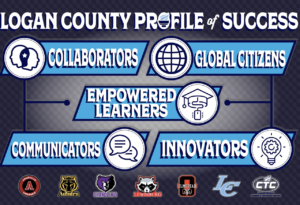How Better Transcripts Will Improve College Admissions, Employment, and Licensing

Despite the fact that his mother was a teacher and his dad was a school board president and a university administrator, Matt Pittinsky was a lousy high school student. He struggled through school but the experience made him think that education could be different and better.
 After college he co-founded Blackboard which became the leading learning management system; 14 years later it was acquired for $1.6 billion. With more than enough money to cover tuition, Matt went back to school and earned a PhD in sociology at Columbia. He then moved to Phoenix to teach at Arizona State University.
After college he co-founded Blackboard which became the leading learning management system; 14 years later it was acquired for $1.6 billion. With more than enough money to cover tuition, Matt went back to school and earned a PhD in sociology at Columbia. He then moved to Phoenix to teach at Arizona State University.
Matt spotted Docufide, a transcript service. He invested, became CEO and in 2011 rebranded as Parchment. Matt is is passionate about turning credentials into opportunities. He believes that the academic record is not as effective as it could be in admissions, employment, or licensing.
Parchment sends, receives, and awards transcripts. Last month Parchment passed the 10 million transactions threshold, and as Matt says “Each one of them has a story.”
The company has raised $59 million of venture capital in six rounds. And it has achieved significant scale–almost a quarter of American high school and college students attend schools that use Parchment.
At the recent national conference, Matt discussed how students and employers are using credentials. “Records must be innovated, they must evolve beyond a list courses and credit,” said Matt. He added that employers want to view competencies and co-curricular activities, and they’d like it all in a graphical format.
Digital Credentials
The global shift to demonstrated competence rather than marking seat time is making transcripts longer and more complicated. For a credential management platform, that’s a business opportunity.
The growing complexity and importance of credentials makes the old paper system obsolete. Digital credentials show a comprehensive record of a student’s college or career readiness including letters of recommendation, artifacts, and credentials in an electronic format.
As institutions capture more information, each issues a different format. Some universities help prospective graduates customize transcripts for specific employers (they way you might tweak your resume for Accenture compared to Google).
Avoiding the Tower of Babble Problem
There is a group of independent schools working on a new competency-based high school diploma format. Matt is bullish on efforts like this that will create a more comprehensive and authentic record for learners.
With a universal competency-based template, “each individual high school can develop a unique transcript,” said Matt.
However, he’s worried about the Tower of Babble problem with a proliferation of formats. For large scale processes like college admissions, transcripts must be presented in a machine readable uniform format.
Matt doesn’t see the addition of digital portfolios impacting his business. If college admissions officers have only 10 minutes to review a transcript, there will be more pressure on recognized credentials and inferences included the record itself.
Blockchain represents a technology shift that will be applied to credentials but Pittinsky sees big design decisions to be worked out. He sees the potential for a long-term academic identity on a distributed ledger but he thinks blockchain will store locations to systems that that record comprehensive records–a balance between permanence and portability.
The closest thing we have to that sort of longitudinal record today is the National Student Clearinghouse–and blockchain could clearly provide a better and more comprehensive record.
The other big opportunity is an extensible learner record, one that can draw from many sources (i.e., school records, i-Ready, Khan Academy, tutors, summer school). Matt thinks that will be a value added service. While he doesn’t think that all of the data will be written to the blockchain, it will be critical for common identity and a directory of source data.
“With distributed learning and comprehensive opportunities both formal and informal, extensibility will be key,” said Pittinsky. What we should be focused on, according to Pittinsky, is who issues the key to the credential. He thinks that will keep Parchment busy for a long time.
Podcast Key Takeaways:
[:15] About today’s topic and guest: the future of transcripts with Matt Pittinsky.
[1:35] Matt’s early education.
[2:26] Why did Matt initially want to become a teacher?
[2:56] How Matt ended up at Columbia University.
[3:48] How Matt originally got connected to Parchment.
[4:29] The mission of Parchment.
[5:20] What Parchment does and how it works.
[6:09] Parchment’s customer base and where their revenue comes from.
[6:34] The focus of Parchment’s upcoming annual conference.
[7:45] The current programmatic and technology trends in credentialing that are influencing Parchment.
[8:54] The global shift of transcripts becoming more useful but complicated.
[9:35] Why Matt feels as though there’s a great opportunity for a credential management platform.
[11:11] How does Matt feel about the Mastery Transcript Consortium (a group of independent high schools that are trying to build a new transcript format)?
[15:30] Does Matt think more authentic, evidence-based transcripts are making an impact on his business?
[18:41] Is Matt optimistic or skeptical on the current tech trends in credentialing?
[21:59] Matt’s case for how a distributed ledger — particularly Parchment — verifies and shares credentials more conveniently and less expensively than traditional approaches.
[24:55] Does Matt see an extensive learner record belonging on Blockchain in the future?
[29:18] The two holy grails: Longitude record and an extensible learning record, pulling from a broader set of educational service providers.
[30:20] Does Matt see these extensible learner records as distributed databases?
Mentioned in This Episode:
Parchment
Blackboard
Columbia University
Arizona State University
Mastery Transcript Consortium
Blockchain
Coursera
Dreambox
Scottsdale Unified School District
Khan Academy
Want to Learn More About Innovations in Higher Ed?
Listen to “S3:E3 Accessible, Affordable, Achievable HigherEd for Working Adults”, which features Paul LeBlanc; President of Southern New Hampshire University.
For more see:
- How Blockchain Will Transform Credentialing (and Education)
- School Consortium Proposes a Better Transcript | Getting Smart
- Proposal For An Innovation Diploma
Stay in-the-know with all things EdTech and innovations in learning by signing up to receive the weekly Smart Update. This post includes mentions of a Getting Smart partner. For a full list of partners, affiliate organizations and all other disclosures please see our Partner page.








0 Comments
Leave a Comment
Your email address will not be published. All fields are required.